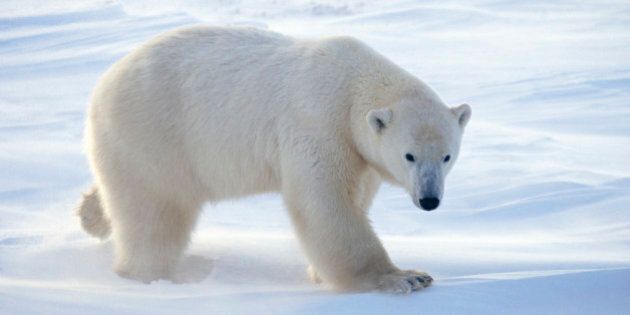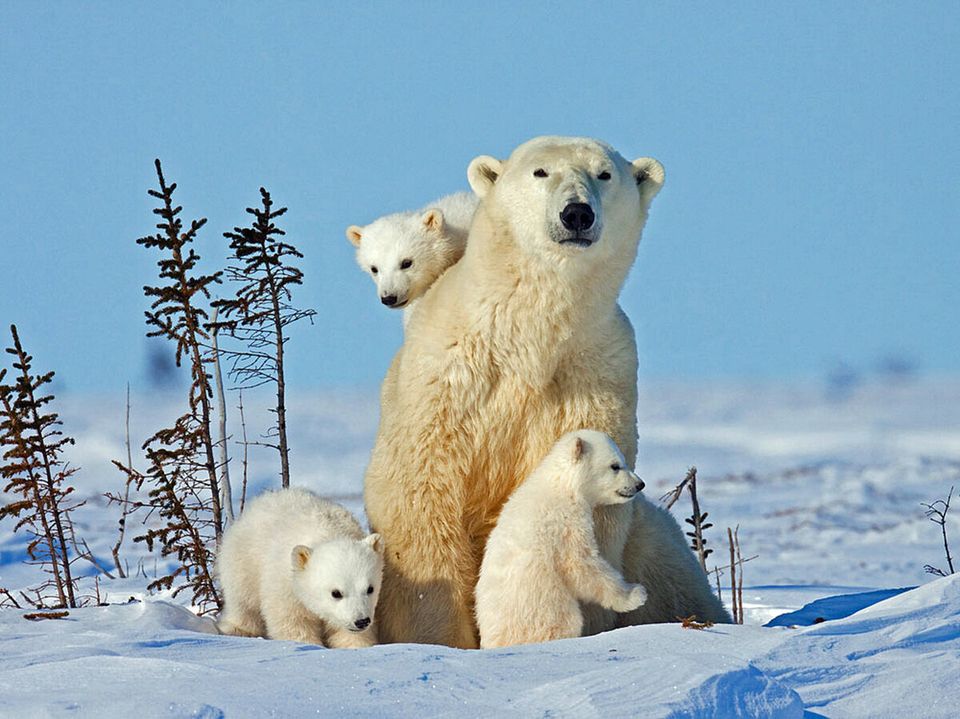
Written by Peter Ewins, Lead Specialist, Species Conservation
Polar bears are spending longer periods in the summer and fall open-water season resting along Arctic coastlines due to thinning and retreating sea ice. Cut off from seals, their primary food source, these bears scavenge food and are sometimes attracted to communities by odours from country (hunted) food and general human waste.
Throughout their range, there are increasing encounters between polar bears and people. This year alone, the community of Arviat, Nunavut experienced about 190 encounters with polar bears either in or just outside of the hamlet. This brings major risks to communities, and has led to increased numbers of bears being killed under regulations that allow that in defence of human life and property.
WWF is working with communities across the arctic to reduce conflicts between bears and people, and together we've achieved some great results so far. Over the past six years, working with the Hamlet of Arviat, Nunavut, we have successfully reduced the number of polar bears destroyed from an average of eight per year before 2010 to one per year since, despite an increasing frequency of encounters between people and polar bears.
Here's how it's done:
Polar bear patrols
Teams patrol the area on snowmobile or ATV, especially at night (when bears are more likely to come into towns) to find bears and scare them off before they get too close to people and homes. Arviat now has a 24-hour polar bear hotline to notify patrols as soon as a bear is spotted.
Deterrent tools
Patrols usually travel by snowmobile or ATV and carry a number of devices to scare bears away. They have cracker shells, flares, beanbag rounds and rubber bullets, which are fired from guns and make loud noises and can scare bears away. If that doesn't work (and often hungry bears in poor condition are persistent), then a live trap baited with seal meat is used. Trapped bears are then transported and released away to the north of town. Only as a last resort are live rounds used.
Waste management
Some communities have begun efforts to sort waste to eliminate organic materials from the general landfill and remove one of the most significant attractants for bears. However, this is a costly process and most communities do not have the finances to implement this important measure.
WWF is working to expand the success of this model to more communities across the Arctic, and we'll be taking some first steps to share lessons with a 'front-line operators' workshop on Hudson Bay in March of 2016. Find out more about our polar bear/human conflict work by watching the video below.
Learn more about WWF-Canada's arctic work, and how you can support our conservation projects by signing a petition or making a donation by visiting www.arctichome.ca
Follow HuffPost Canada Blogs on Facebook
ALSO ON HUFFPOST:
